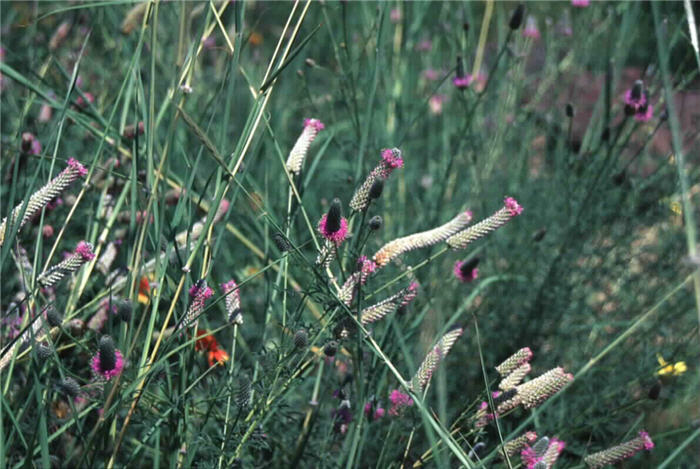| Botanical Name: Petalostemon purpureum | |
| Common Name: Purple Prairie Clover |

-
Anatomy
-
Culture
-
Design
Plant Type
Perennial
Height Range
1-3'
Flower Color
Purple
Flower Season
Summer
Leaf Color
Green, Dark Green
Bark Color
n/a
Fruit Color
n/a
Fruit Season
n/a
Sun
Full, Half
Water
Very Low, Low
Growth Rate
Moderate
Soil Type
Sandy, Clay, Loam, Rocky, Unparticular
Soil Condition
Average, Poor, Well-drained, Dry
Soil pH
Neutral, Basic
Adverse Factors
Attracts Bees
Design Styles
English Cottage, Meadow, Mediterranean, Ranch, Spanish
Accenting Features
Showy Flowers
Seasonal Interest
Summer
Location Uses
Perennial Border, Patio, Raised Planter, With Rocks
Special Uses
Mass Planting, Naturalizing, Small Spaces
Attracts Wildlife
Hummingbirds, Butterflies
Information by: Stephanie Duer
Photographer: Mountain States Nursery
Photographer: Mountain States Nursery
-
Description
-
Notes
Purple prairie clover is a midwest plains native and native to the Rockies, growing in open prairies and grasslands. In the Rockies, it is found as high as 7500 feet, and so is well suited to the bench and canyon areas. It has an upright, clumping, and spikish habit reminiscent of Liatris, with magenta to pink tufted blossoms forming along the stem ends in August and September. It grows about 24 to 30 inches tall and about 24 inches wide. Use in sunny borders or in naturally styled meadow gardens.
Grow in well drained soil in full sun to light shade. Tolerates poor soils and drought conditions. Syn with Dalea purpureum. Is hardy to -30f